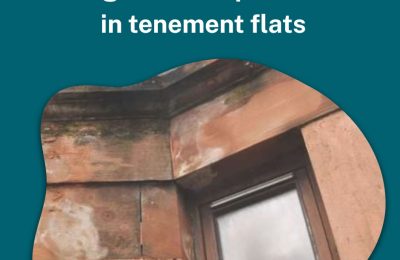Finding your dream home online and discovering that the property agent either deliberately or unintentionally may have misled you by not providing accurate information of both the inside and outside can be a common frustration for tenants.
Fortunately, earlier this year, Propertymark worked with The Property Ombudsman and Warwickshire County Council Trading Standards Service to produce a ‘Primary Authority Advice’, also known as Assured Advice 40. This advice can be used throughout the UK, including Scotland, as a guide to help people comply with the law.
Your local Trading Standards Service should encourage agencies to follow such published advice and ideally not ever request that you comply with the law in a contrasting way. You must inform a local council enforcement body that you are a member of the scheme if you are approached by them.
The Consumer Protection from Unfair Trading Regulations 2008 is the appropriate law here, as it regulates the depth of information provided on a property and the use of images to share key details.
Ensuring Transparency in Property Listings: Key Considerations for Agents
Property agents are forbidden from providing inaccurate information, descriptions and omitting vital information that should be included to help a person make an informed decision about a property.
Information and images should not consist of any misleading detail that would cause a person to take a transactional decision they would not otherwise have taken if full, complete and required information had been provided from the outset.
The law considers the circumstances of how such information and images are shared and expects every effort to be made to ensure communications do not mislead or confuse consumers. Agents must be able to prove they have provided all key information that gives tenants a full and accurate overview on the property listed.
Certain factors are also assessed individually, such as whether a photo or image can be potentially reused in the future, whether the natural fabric and/or state of the home will change as time progresses, and whether buildings may be added or removed.
Incorrect information must not be used full stop, and this applies to refurbished rooms if they cause a consumer to take an action they would not otherwise have taken.
This above image here serves as a good example of how the same photograph could be used in separate listings over many years. It could be argued that the image is being deployed to attract tenants and does not necessarily represent the current state of the home.
Agents should also refrain from writing descriptions within an image or photo and then disclaiming it, and that was clarified by case law such as Norman v Bennett [1974] 3 All ER 351, which established that the disclaimer must equal the trade description.
In additional case law like R v Southwood [1987] 3 All ER 556, the liberal use of disclaimers was forbidden.
David Oliver, Compliance Manager at Propertymark, said:
“Propertymark is proud to have worked alongside The Property Ombudsman and Warwickshire County Council Trading Standards to have issued the Primary Authority Advice so that agents throughout every part of the UK, including Scotland, can successfully comply with their legal duties under the Consumer Protection from Unfair Trading Regulations 2008 and ensure that consumers can view accurate images of properties that prevent them from taking actions they would not have otherwise taken using inaccurate information. Propertymark is always here to support its agents fulfil all their legal obligations.”
You can view the guide Warwickshire County Council Trading Standards Service has issued on this legislation here: Assured-Advice-40-Stock-images-or-artist-impressions.pdf











